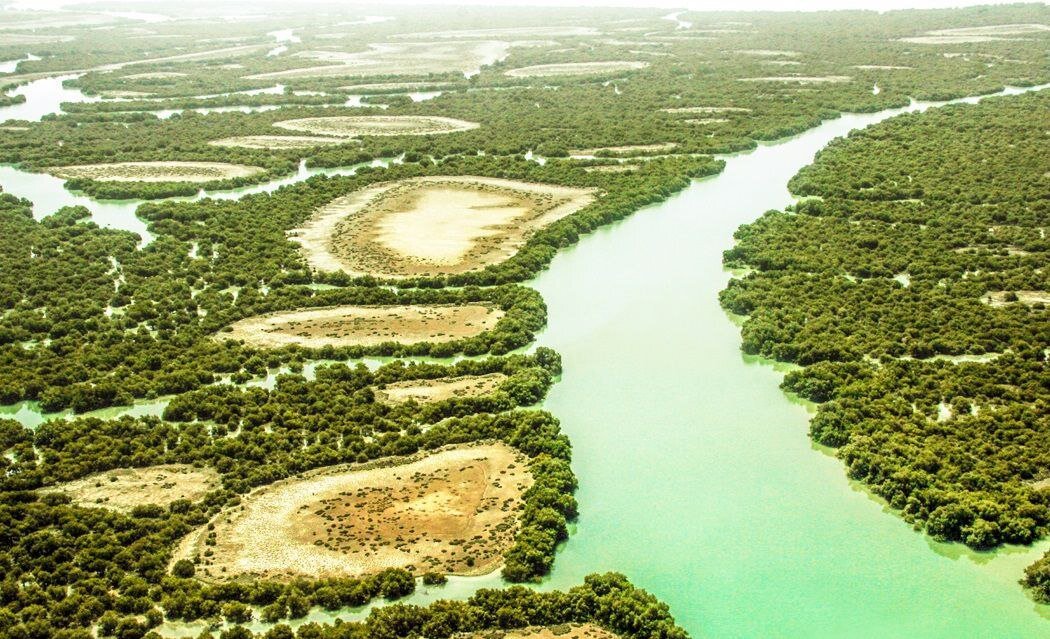Researchers warn against mangrove loss in Persian Gulf

TEHRAN – According to a study by researchers at National Institute of Oceanography, mangrove ecosystems in the northern Persian Gulf are facing a range of environmental and anthropogenic pressures.
The mangrove tree, as a wonder of the marine environment, offers many benefits to various species including birds, fish, crustaceans, and even some terrestrial animals, and stabilizes the soil, as well. Mangrove forests are rich ecosystems that support the planet and humanity in unique ways by providing conditions for fish growth, storing carbon, and fighting floods.
They are able to store about 6 to 8 tons of carbon per hectare of soil per year. They contribute to the creation of a complete ecosystem. Above water, mangrove trees provide a habitat for birds while amphibians and small fish live on their roots. Mangroves play a crucial role in preserving the beach soil and protecting it from erosion. Mangrove trees play a vital role in maintaining the ecological balance of the sea coast.
Mangrove forests in Iran mostly consist of the Avicenna marina, known as Hara, named after the 11th-century great Iranian scientist Avicenna or Abu-Ali-Sina.
The study assesses the ecological dynamics of the Mangroves of Dayyer City (MDC) in the northern Persian Gulf using a multidimensional approach involving satellite-derived, drone-based, and field-measured data.
Satellite imagery from Google Earth (2011–2022) reveals fluctuations in the MDC area, with notable afforestation efforts until 2018 followed by rapid degradation.
The mangrove forest, initially covering 2.2 hectares in 2011, expanded to 3.2 hectares by 2015 due to afforestation efforts but declined to 1.7 ha by June 2022, ISNA reported.
The construction of a nonstandard road and a bridge in 2018 obstructed freshwater flow from upper areas, emerging as a major factor responsible for the degradation.
Drone-based observations in March 2023 provided a detailed map, revealing that 44 percent of healthy mangroves had been damaged. Field measurements conducted in November 2023 showed higher salinity levels at MDC compared to other adjacent mangrove areas.
Principal component analysis (PCA) also demonstrated differences in the environmental conditions of the MDC compared to those of the two habitats sampled (Nayband and Melgonzeh).
The study suggests that long-term, multi-stressor monitoring, especially at different points within the mangrove ecosystem, is essential for effective management.
By discussing these local variations in salinity and their impact, the case study highlights how site-specific conditions must be taken into account when assessing mangrove health and interpreting the effect of salinity stress.
The research also stresses the critical need to address human-induced threats to mangrove ecosystems. Urgent conservation and management strategies are essential for mitigating the impact of anthropogenic pressures and ensuring the survival of mangrove ecosystems in the face of environmental challenges.
Moreover, the climate change impacts must be considered when planning conservation and management strategies.
Rising temperatures and sea levels, along with increased salinity, pose long-term threats to mangroves.
Therefore, developing integrated conservation strategies that combine restoration efforts with the mitigation of both human-induced and climate-related stressors to enhance the resilience of mangrove forests is essential.
While mangrove forests face multiple challenges, conservation efforts, community involvement, and sustainable management practices can help mitigate these threats and contribute to the preservation and restoration of these critical ecosystems. The regular assessment of mangrove ecosystems is crucial for conservation, sustainable management, and the well-being of both natural environments and the human communities that depend on them.
Failing to address these challenges will bring about irreparable consequences that will pose major threats to the environment.
MT/MG
Leave a Comment